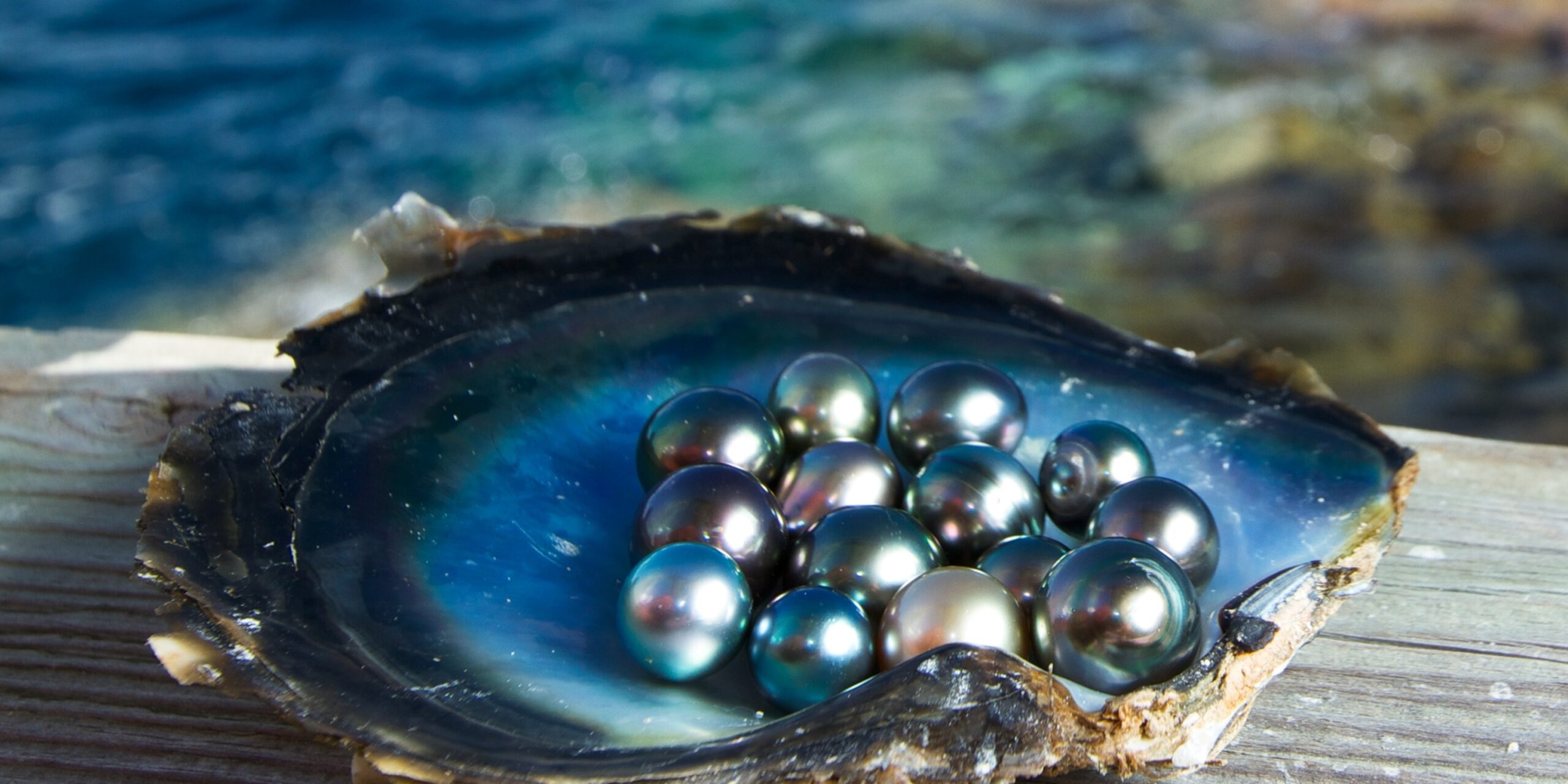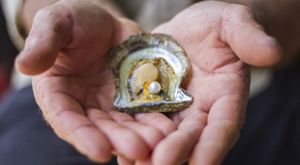Key Insights
- Maintain water pH levels between 6.5 and 8.5 for optimal pearl production.
- Regular water testing is crucial to detect and correct any imbalances.
- Temperature control is vital; aim for a consistent range between 20°C and 30°C.
- Use filtration systems to keep water free from harmful pollutants.
- Implement sustainable practices to ensure long-term success in pearl farming.
Optimizing Pearl Farm Conditions
In the world of pearl farming, the quality of your pearls is only as good as the conditions in which they’re grown. To optimize these conditions, we need to focus on a few key areas: pH balance, water quality control, and temperature regulation. Each of these factors plays a critical role in ensuring that the mussels thrive and produce high-quality pearls.
Importance of Ideal Conditions for Pearl Quality
Creating the perfect environment for pearl production isn’t just about setting up a farm and hoping for the best. It’s about understanding the intricate balance of nature and leveraging it to your advantage. The right conditions can significantly enhance the growth rate and quality of the pearls. Conversely, poor conditions can lead to stunted growth, discolored pearls, or even mussel death.
Impact of Environmental Factors on Pearl Formation

Environmental factors can have a profound impact on pearl formation. These include freshwater pearl harvesting techniques and the surrounding ecosystem.
- Pollution: Contaminants in the water can harm mussels and affect pearl quality.
- Temperature: Extremes can stress mussels, impacting pearl development.
- pH levels: Imbalances can lead to poor mussel health and inferior pearls.
Each of these factors can either help or hinder pearl production, which is why it’s essential to monitor and adjust them continually.
Achieving Optimal pH Balance
The pH level of the water in your pearl farm is one of the most critical factors to control. It affects everything from mussel health to pearl luster. Therefore, understanding how to maintain the right pH balance is essential for any successful pearl farmer.
Understanding the Role of pH in Pearl Farming
pH measures how acidic or alkaline the water is. In pearl farming, the ideal pH range is between 6.5 and 8.5. Mussels are sensitive to changes in pH, and if the water is too acidic or too alkaline, it can lead to stress and disease, affecting their ability to produce quality pearls. For more insights, explore the factors affecting natural pearl luster.
Steps to Test and Adjust pH Levels
To ensure your water’s pH is within the optimal range, follow these steps. For a comprehensive guide on freshwater pearl farming, you can refer to this article.
- Test the water regularly using a reliable pH meter or test strips.
- If the pH is too low (acidic), add lime or a similar alkaline substance to raise it.
- If the pH is too high (alkaline), use acidifiers like vinegar or citric acid to lower it.
- Retest after adjustments to ensure the pH is stable.
Tools and Kits for pH Monitoring
Having the right tools can make pH monitoring much easier. Consider investing in:
- A digital pH meter for accurate readings.
- pH test strips for quick checks.
- Calibration solutions to ensure your meter stays accurate.
With these tools, you’ll be well-equipped to maintain the perfect pH balance for your pearl farm. For additional insights on addressing issues like surface spots, explore our guide on pearl blemishes in cultivation.
Comprehensive Water Quality Control
Beyond pH, other aspects of water quality play a crucial role in the success of a pearl farm. Controlling these factors ensures the health of your mussels and the quality of the pearls they produce.
Essential Water Parameters for Mussel Health
To keep your mussels healthy, monitor these key water parameters:
- Dissolved oxygen: Essential for mussel respiration; aim for levels above 5 mg/L.
- Temperature: Maintain between 20°C and 30°C to prevent stress.
- Nutrient levels: Ensure sufficient nutrients for mussel growth, but avoid excess that can lead to algal blooms.
By keeping these parameters in check, you create an environment where mussels can thrive and produce high-quality pearls.
Common Contaminants and How to Eliminate Them
- Heavy Metals: These can accumulate from industrial runoff. Use chelating agents to bind and remove them from the water.
- Pesticides: Often found in agricultural runoff, they can be removed using activated carbon filters.
- Algal Blooms: Excess nutrients can lead to harmful algal blooms. Control nutrient levels and use algaecides if necessary.
Contaminants like heavy metals, pesticides, and excessive nutrients can severely impact mussel health. Heavy metals, for instance, can cause toxicity in mussels, affecting their growth and pearl production. Pesticides, often entering water systems through runoff, can disrupt the delicate balance of aquatic ecosystems.
To eliminate these contaminants, it’s crucial to identify their sources. Regular testing of water samples will help detect the presence of these harmful substances early. Once identified, take corrective measures like using chelating agents to remove heavy metals and activated carbon filters for pesticides.
Moreover, preventing contamination is just as important as eliminating it. Implementing buffer zones with vegetation around farms can reduce runoff, while proper waste management can prevent pollutants from entering the water.
Utilizing Filtration Systems Effectively
Filtration systems are essential in maintaining clean water for pearl farms. They work by removing impurities and contaminants that can harm mussels. It’s important to choose a filtration system that suits the size and needs of your farm. Sand filters, for example, are effective for removing suspended particles, while biological filters can help maintain the right balance of beneficial bacteria.
Aeration and Its Impact on Water Quality
Aeration is the process of adding oxygen to water, which is vital for mussel respiration. Proper aeration can prevent the buildup of harmful gases like ammonia and maintain the dissolved oxygen levels necessary for healthy mussels. There are various aeration methods, such as diffused air systems or paddlewheel aerators, each suited for different farm setups. Regularly check and maintain these systems to ensure they operate efficiently.
Temperature Regulation in Pearl Farms

Temperature is another critical factor that can influence pearl farming success. Mussels require a stable temperature range to thrive, typically between 20°C and 30°C. Fluctuations outside this range can stress the mussels, slowing growth and impacting pearl quality.
To maintain consistent temperatures, consider the natural environment of your farm. For instance, if your farm is in a region with extreme temperature variations, you might need to implement additional measures such as shading or heating systems. For more insights on maintaining optimal conditions, you can refer to this comprehensive guide on freshwater pearl harvesting.
Remember, temperature doesn’t just affect mussel health; it also influences the rate of pearl formation. Warmer temperatures can speed up the process, while cooler ones can slow it down. Therefore, maintaining the right temperature is crucial for timely pearl harvests.
Example: In a pearl farm located in a tropical region, the farmers noticed that during the hotter months, their mussels were more stressed, leading to lower pearl quality. By installing shade nets and increasing aeration, they managed to stabilize the temperature and improve their pearl yield. For more insights on improving pearl quality, consider exploring addressing pearl blemishes in cultivation.
The Influence of Temperature on Pearl Development
Temperature affects not only the health of the mussels but also the luster and size of the pearls. Higher temperatures can lead to faster metabolism in mussels, which might increase pearl size but can also reduce luster if not managed carefully. Conversely, cooler temperatures might produce smaller pearls with better luster. Balancing these aspects is key to producing high-quality pearls.
Strategies to Maintain Optimal Temperatures
To maintain optimal temperatures, consider implementing the following strategies:
- Use shade structures to protect mussels from direct sunlight.
- Install heating systems for colder climates to keep water temperatures stable.
- Employ temperature sensors to monitor changes and respond quickly to fluctuations.
Thermal Equipment and Technologies for Pearl Farms
There are several thermal technologies available to help maintain the right temperature in pearl farms. Heat pumps can be used to warm water during colder months, while chillers can cool it during hotter periods. Additionally, automated temperature control systems can provide real-time monitoring and adjustments, ensuring that your farm remains within the ideal temperature range at all times.
Investing in such technologies might seem costly initially, but the benefits in terms of pearl quality and yield can make it a worthwhile investment.
Practical Tips for Daily Farm Operations
Running a successful pearl farm requires attention to detail and consistent management practices. Daily operations should focus on monitoring water quality, maintaining equipment, and ensuring the health of the mussels.
Regular Monitoring Routines for Farm Health
Establish a routine for regular monitoring of water parameters, such as pH, temperature, and dissolved oxygen levels. This helps detect any issues early and allows for timely interventions. Keep detailed records of these measurements to track trends and make informed decisions.
Identifying and Managing Mussel Stress
Mussels can exhibit signs of stress due to environmental changes or poor water quality. Look for indicators such as reduced feeding, slower growth, or changes in shell appearance. Address these issues by adjusting water parameters, improving aeration, or providing additional nutrients. Regular health checks and prompt responses to stress signs can prevent larger problems and ensure a healthy, productive farm.
Techniques for Reducing Disease Risk
Reducing disease risk in pearl farms is crucial for maintaining a healthy population of mussels and ensuring high-quality pearl production. One effective technique is to maintain excellent water quality by regularly testing and adjusting parameters like pH and temperature. This helps prevent the conditions that allow pathogens to thrive.
Another key strategy is to implement biosecurity measures. This includes controlling access to the farm, disinfecting equipment, and monitoring for signs of disease. Early detection and isolation of affected mussels can prevent outbreaks from spreading. Additionally, rotating mussel stocks and allowing rest periods for parts of the farm can break the cycle of disease and promote recovery. For more insights on sustainable practices, explore the Japanese Akoya pearls selective breeding success programs.
Final Thoughts on Pearl Farm Success
- Consistently monitor and adjust water parameters to maintain optimal conditions.
- Invest in technology to aid in temperature and water quality control.
- Implement biosecurity measures to prevent disease outbreaks.
- Regularly educate yourself and your team on the latest aquaculture practices.
- Commit to sustainable practices for long-term success.
Running a successful pearl farm is a balance of art and science. By focusing on the critical factors of pH balance, water quality control, and temperature regulation, you can create an environment where mussels thrive and produce beautiful pearls. These efforts, combined with a commitment to sustainable practices, will ensure the longevity and profitability of your pearl farming operation.
Remember, pearl farming is not just about the end product but about nurturing a delicate ecosystem. With careful management and a willingness to adapt and innovate, you can achieve great success in this rewarding field.
Stay informed and continuously seek out new information and technologies that can enhance your farming practices. This proactive approach will keep your operations efficient and competitive in the ever-evolving world of aquaculture.
Integrating Sustainable Practices
Sustainability is not just a buzzword; it’s a necessity for the future of pearl farming. Integrating sustainable practices can help protect the environment while also improving farm efficiency and productivity. This includes minimizing waste, using eco-friendly materials, and implementing energy-saving technologies.
Moreover, sustainable practices involve careful resource management. By using water efficiently and reducing chemical inputs, you can lower costs and minimize your environmental footprint. Engage with local communities and conservation organizations to stay aligned with regional sustainability goals and practices.
Emphasizing Continuous Learning and Innovation
In the dynamic field of pearl farming, continuous learning and innovation are vital. Stay updated with the latest research and technologies that can improve your farm’s operations. Attend workshops, join aquaculture networks, and participate in training sessions to enhance your skills and knowledge. For instance, exploring selective breeding programs can offer valuable insights into improving pearl quality.
Frequently Asked Questions (FAQ)
Here are some common questions that pearl farmers often have about optimizing their farm conditions:
What is the ideal pH level for pearl farming?
The ideal pH level for pearl farming is between 6.5 and 8.5. This range ensures that the water is neither too acidic nor too alkaline, providing a balanced environment for mussel health and pearl production.
Maintaining this pH range helps prevent stress and disease in mussels, leading to higher quality pearls.
How often should water quality be tested?
Water quality should be tested at least once a week to ensure that all parameters remain within the optimal range. More frequent testing may be necessary if there are significant changes in weather or other environmental factors. For more detailed information, you can refer to this comprehensive guide on freshwater pearl harvesting.
What are common signs of poor water quality in mussels?
Signs of poor water quality in mussels include reduced feeding activity, slow growth, discolored shells, and increased mortality rates. If you notice these signs, it’s essential to test and adjust water parameters immediately.
Why is temperature regulation important in pearl farming?
Temperature regulation is crucial because it directly affects mussel metabolism and pearl formation. Consistent temperatures help maintain mussel health and ensure that pearls develop with the desired luster and size.
Fluctuations can lead to stress, reducing pearl quality and potentially harming mussels. For more information on maintaining optimal conditions, check out this comprehensive guide on freshwater pearl harvesting.
How can I minimize disease outbreaks in a pearl farm?
To minimize disease outbreaks, maintain excellent water quality, implement biosecurity measures, and monitor mussels regularly for signs of illness. Isolate affected mussels quickly to prevent the spread of disease. For a comprehensive guide, you can explore freshwater pearl harvesting techniques.
Additionally, rotating stocks and allowing parts of the farm to rest can help break the cycle of disease.
When cultivating pearls, maintaining optimal conditions is crucial to ensuring high-quality results. One common issue faced by pearl farmers is the appearance of surface spots on pearls. Understanding and addressing pearl blemishes can significantly enhance the quality of the harvest. Proper water quality control and pH balance are essential factors in preventing these blemishes. By implementing effective techniques, farmers can improve the overall appearance and value of their pearls.



